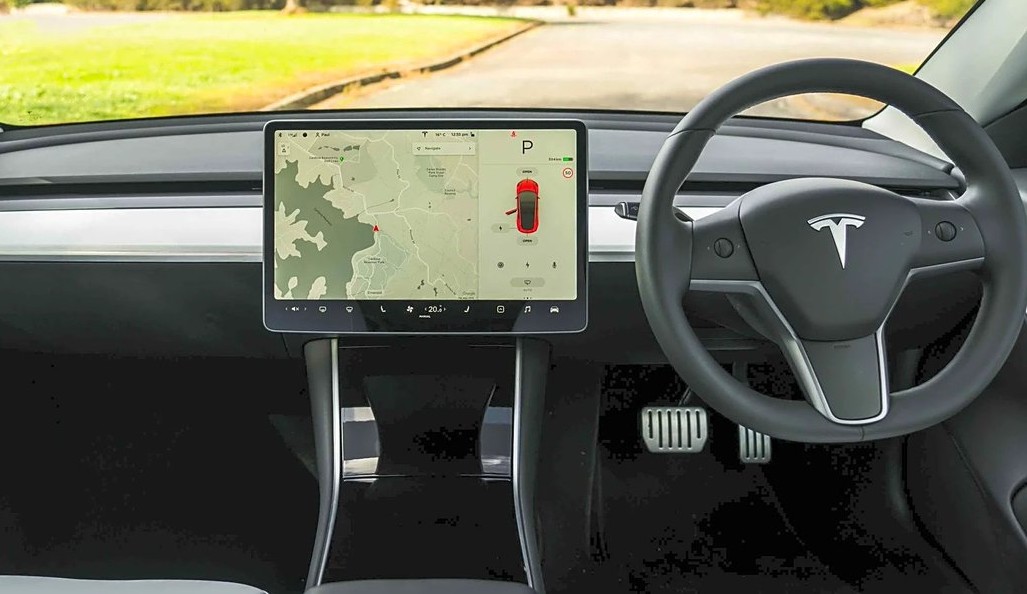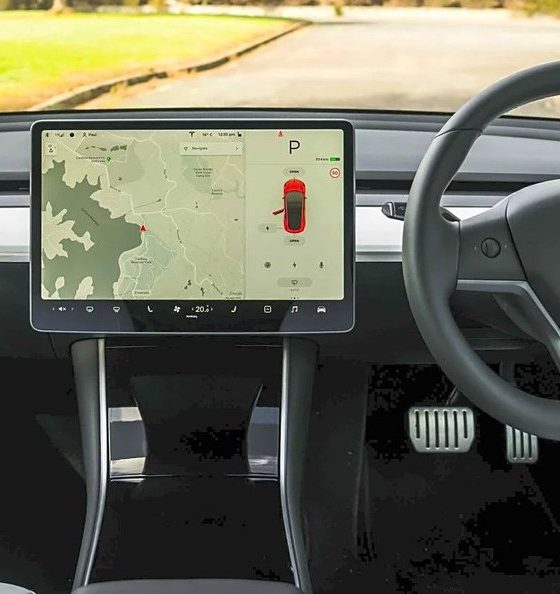

News
Tesla reviewer reveals a secret of the Model 3’s stellar sound system
A Tesla Model 3 reviewer from Australian publication CarAdvice.com recently took to Twitter to give insights on the all-electric vehicle’s stellar sound system shared by an insider at Tesla. The design and sourcing for the car’s audio parts were completed by engineers previously employed by Bang & Olufsen, a manufacturer known for its high-end speakers and headphones, according to the source.
“Fun fact from a guy (very) in the know at @Tesla. Why is the sound system in Model 3 the best we’ve ever tested fitted to a car? They hired ex-B&O engineers that were tasked with designing and sourcing the best speakers and amplifiers on the market. The end result is a sound system that sounds better than the $12,000 Bang and Olufsen option on an Audi A8. Once you remove licensing and branding, you can have the same sound quality without the incredible price tag and lack of design flexibility,” Paul Maric, Senior Road Tester at CarAdvice.com stated on Twitter.
The Tesla Model 3 sound system has received rave reviews since the car began its initial customer deliveries. Many have noted that the quality is superior to even their Model S or Model X vehicles with premium sound upgrades. Notably, the Model 3 has a total of 15 speakers: 3 front tweeters,
3 front mids, 2 front woofers, 2 front immersive speakers, 4 full-range rear speakers, and 1 subwoofer.
A full review of the Tesla Model 3 Performance was published by Maric prior to his comments about the engineering background of the audio, and his enthusiasm for the car’s sound quality was quite apparent.
“This sound system is incredible. It is the best sound system I’ve heard in a car. And that may sound ridiculous to you when you consider that some manufacturers charge you $20,000 for a Bang & Olufsen sound system. This is by far the best sound system on the market. It is incredible, and I challenge you to go check that for yourself. You will be impressed by it,” he exclaimed. The Model 3 has only recently arrived in Australia, and CarAdvice.com was given the opportunity to test drive one prior to its local launch.
CEO Elon Musk has also touted the Model 3 sound system, particularly as part of Tesla’s runup to the Version 10 firmware release. “Ability to stream YouTube & Netflix when car is stopped coming to your Tesla soon! Has an amazingly immersive, cinematic feel due to the comfy seats & surround sound audio,” Musk announced on Twitter. “Watching a movie on Tesla V10.0 is great, in large part due to the sound system…feels just like an old school drive in movie experience, but with much better sound.”
Several other upcoming V10 features were revealed by Musk on Twitter, including new games, infotainment features, improvements in Autopilot behavior on highways as well as better traffic light and stop sign recognition, and Smart Summon (previously Enhanced Summon). Also mentioned was a feature called “Joe Mode” which would lower the volume of Autopilot warnings and notifications by half. Musk additionally noted that some infotainment features will need a premium connectivity package. This latest firmware is estimated to be release within the next few months, with Early Access Program participants receiving it sometime in August.

News
Tesla FSD fleet is nearing 7 billion total miles, including 2.5 billion city miles
As can be seen on Tesla’s official FSD webpage, vehicles equipped with the system have now navigated over 6.99 billion miles.

Tesla’s Full Self-Driving (Supervised) fleet is closing in on almost 7 billion total miles driven, as per data posted by the company on its official FSD webpage.
These figures hint at the massive scale of data fueling Tesla’s rapid FSD improvements, which have been quite notable as of late.
FSD mileage milestones
As can be seen on Tesla’s official FSD webpage, vehicles equipped with the system have now navigated over 6.99 billion miles. Tesla owner and avid FSD tester Whole Mars Catalog also shared a screenshot indicating that from the nearly 7 billion miles traveled by the FSD fleet, more than 2.5 billion miles were driven inside cities.
City miles are particularly valuable for complex urban scenarios like unprotected turns, pedestrian interactions, and traffic lights. This is also the difference-maker for FSD, as only complex solutions, such as Waymo’s self-driving taxis, operate similarly on inner-city streets. And even then, incidents such as the San Francisco blackouts have proven challenging for sensor-rich vehicles like Waymos.
Tesla’s data edge
Tesla has a number of advantages in the autonomous vehicle sector, one of which is the size of its fleet and the number of vehicles training FSD on real-world roads. Tesla’s nearly 7 billion FSD miles then allow the company to roll out updates that make its vehicles behave like they are being driven by experienced drivers, even if they are operating on their own.
So notable are Tesla’s improvements to FSD that NVIDIA Director of Robotics Jim Fan, after experiencing FSD v14, noted that the system is the first AI that passes what he described as a “Physical Turing Test.”
“Despite knowing exactly how robot learning works, I still find it magical watching the steering wheel turn by itself. First it feels surreal, next it becomes routine. Then, like the smartphone, taking it away actively hurts. This is how humanity gets rewired and glued to god-like technologies,” Fan wrote in a post on X.
News
Tesla starts showing how FSD will change lives in Europe
Local officials tested the system on narrow country roads and were impressed by FSD’s smooth, human-like driving, with some calling the service a game-changer for everyday life in areas that are far from urban centers.

Tesla has launched Europe’s first public shuttle service using Full Self-Driving (Supervised) in the rural Eifelkreis Bitburg-Prüm region of Germany, demonstrating how the technology can restore independence and mobility for people who struggle with limited transport options.
Local officials tested the system on narrow country roads and were impressed by FSD’s smooth, human-like driving, with some calling the service a game-changer for everyday life in areas that are far from urban centers.
Officials see real impact on rural residents
Arzfeld Mayor Johannes Kuhl and District Administrator Andreas Kruppert personally tested the Tesla shuttle service. This allowed them to see just how well FSD navigated winding lanes and rural roads confidently. Kruppert said, “Autonomous driving sounds like science fiction to many, but we simply see here that it works totally well in rural regions too.” Kuhl, for his part, also noted that FSD “feels like a very experienced driver.”
The pilot complements the area’s “Citizen Bus” program, which provides on-demand rides for elderly residents who can no longer drive themselves. Tesla Europe shared a video of a demonstration of the service, highlighting how FSD gives people their freedom back, even in places where public transport is not as prevalent.
What the Ministry for Economic Affairs and Transport says
Rhineland-Palatinate’s Minister Daniela Schmitt supported the project, praising the collaboration that made this “first of its kind in Europe” possible. As per the ministry, the rural rollout for the service shows FSD’s potential beyond major cities, and it delivers tangible benefits like grocery runs, doctor visits, and social connections for isolated residents.
“Reliable and flexible mobility is especially vital in rural areas. With the launch of a shuttle service using self-driving vehicles (FSD supervised) by Tesla in the Eifelkreis Bitburg-Prüm, an innovative pilot project is now getting underway that complements local community bus services. It is the first project of its kind in Europe.
“The result is a real gain for rural mobility: greater accessibility, more flexibility and tangible benefits for everyday life. A strong signal for innovation, cooperation and future-oriented mobility beyond urban centers,” the ministry wrote in a LinkedIn post.
News
Tesla China quietly posts Robotaxi-related job listing
Tesla China is currently seeking a Low Voltage Electrical Engineer to work on circuit board design for the company’s autonomous vehicles.

Tesla has posted a new job listing in Shanghai explicitly tied to its Robotaxi program, fueling speculation that the company is preparing to launch its dedicated autonomous ride-hailing service in China.
As noted in the listing, Tesla China is currently seeking a Low Voltage Electrical Engineer to work on circuit board design for the company’s autonomous vehicles.
Robotaxi-specific role
The listing, which was shared on social media platform X by industry watcher @tslaming, suggested that Tesla China is looking to fill the role urgently. The job listing itself specifically mentions that the person hired for the role will be working on the Low Voltage Hardware team, which would design the circuit boards that would serve as the nervous system of the Robotaxi.
Key tasks for the role, as indicated in the job listing, include collaboration with PCB layout, firmware, mechanical, program management, and validation teams, among other responsibilities. The role is based in Shanghai.
China Robotaxi launch
China represents a massive potential market for robotaxis, with its dense urban centers and supportive policies in select cities. Tesla has limited permission to roll out FSD in the country, though despite this, its vehicles have been hailed as among the best in the market when it comes to autonomous features. So far, at least, it appears that China supports Tesla’s FSD and Robotaxi rollout.
This was hinted at in November, when Tesla brought the Cybercab to the 8th China International Import Expo (CIIE) in Shanghai, marking the first time that the autonomous two-seater was brought to the Asia-Pacific region. The vehicle, despite not having a release date in China, received a significant amount of interest among the event’s attendees.








